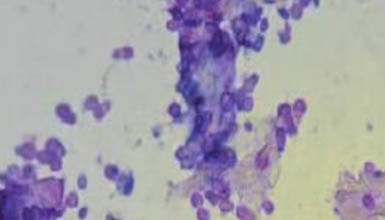Fungal infection in dogs Malassezia dermatitis DIAGNOSIS & TREATMENT options
 Malassezia dermatitis (dog fungal infection) diagnosis
Malassezia dermatitis (dog fungal infection) diagnosis
If a vet suspects that your dog has a fungal infection (from their scratching and the appearance of the skin … there are several methods used to determine it
Methods of collecting samples for diagnosing yeast dermatitis in dog
Non Invasive
- Impression smear – pressing a microscope slide on the skin to collect yeast organisms
- Acetate tape preparations – applying a piece of clear tape to the skin to collect yeast organisms
- Cotton swab sample – rubbing a moistened swab on the skin to collect yeast organisms
Invasive
If the above tests are inconclusive or the fungal infection is different from what a vet usually sees, they might decide to go the more painful methods:
- Skin scraping with a surgical blade – scraping the skin with a blade to collect yeast organisms
- Skin biopsy – obtaining a small piece of skin with a biopsy punch. This is the most invasive diagnostic test but provides the most complete diagnostic information.
From the fungal sample inspection under a microscope a diagnosis is usually obtained. In more diffcult cases vets may choose to grow samples into larger populations before deciding on a treatment.
How dog fungal infection (yeast dermatitis) treated
Dogs are treated for yeast dermatitis either topical (ointment), orally (tablets) or a combination in severe cases.
Topical treatment
Treatment with medicated shampoos is the most regular method of treating yeast dermatitis.
This is relatively good news for owners with suffering pets, as once your dog has been diagnosed, and maybe had a course of cortisone, the regular application of a quality anti-fungal shampoo is the main method of control – no regular vet visits or prescriptions required.
Many dogs with greasy or oily skin (and in particular those breeds mentioned in the previous post) will need an initial “de-greasing” cleansing with a shampoo containing selenium sulfide or benzoyl peroxide.
After the first degreasing shampoo an anti-fungal shampoo is used. These often contain:
- chlorhexidine
- ketoconazole
- miconazole
You will have to EXACTLY follow the directions of the specific shampoo as the good ones have anti fungal and anti bacterial agents. Some require a 5 minutes or a 10 minutes dose before washing off.
HERE IS THE THING that you may not read on the bottle or your vet may not tell you
The anti-fungal shampoo should be applied EVERY 3-5 days for 2 – 14 weeks.
NOTE if your dog has an ear or paw infection, you can supplement the full body wash with daily local treatments of the shampoo diluted 20 to 1 and left on the skin.
But always consult your vert for your specific dog and specific shampoo !
Oral treatment of dog fungal disease
In chronic cases of yeast dermatitis infection, oral or systemic anti-fungal medications are often prescribed.
Yeast dermatitis will also often have a bacterial skin infection (pyoderma) and will require antibiotics to treat the bacterial infection for typically four to twelve weeks.
NOTE the good anti-fungal shampoos have anti fungal and anti bacterial properties, but if you have a strong case of fungal infection, and you want to deal with the specific bacteria then an ORAL tablet or solution IS the only way to deal with it.
Oral anti-fungal medications include
- fluconazole.
- ketoconazole
- itraconazole
These medications are for short term use only – to get the fungal infection under control until the shampooing can manage the condition.
Long term use can damage your dogs liver .
Your vet is definitely best at diagnosing your dogs disease, and the treatment. Sometimes they will only need the shampoo, sometimes the oral and shampoo – it all depends on your specific case.